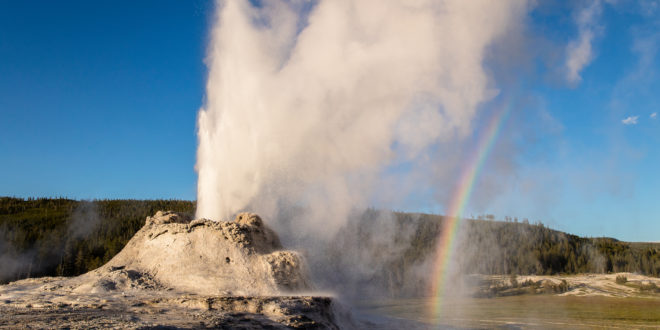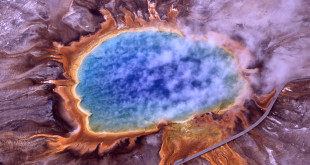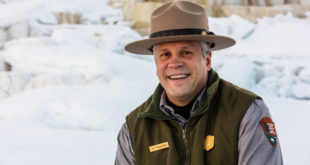By calculating how much water and heat are flowing out of Yellowstone hot springs, researchers from Washington State University and the University of Idaho say the Yellowstone caldera is hotter and larger than previously estimated.
The caldera sits below much of Yellowstone National Park, fueled by a shallow basalt magma reservoir that itself it fueled by melted rock flowing from the earth’s mantle. The finding that the calder is hotter and larger than estimated doesn’t mean that the Yellowstone supervolcano is likelier or less likely to blow up now or within coming decades, but it does offer some insight as to how the Yellowstone plumbing system works. From Washington State University:
While their findings offer no help in predicting if the volcano will erupt, they now can get a better understanding of a key factor behind how it works — a pool of basalt magma recharging the system. “It is the coal in the furnace that’s heating things up,” said Peter Larson, a professor in WSU’s School of the Environment. “It’s heating up the boiler. The boiler is what explodes. This tells us what is heating the boiler.”..
With funding from the National Science Foundation, the researchers “spiked” several hot springs in Yellowstone National Park with deuterium, a stable hydrogen isotope. The researchers used the length of time needed for deuterium concentrations to return to background levels and the temperature of the hot springs to calculate the amount of water and heat flowing out of the springs. Using deuterium for estimating heat flow is safe for the environment and has no visual impact to distract from the park visitors’ experience.
The team found that previous studies underestimated the amount of water coursing through the springs and the amount of heat leaving the springs. The data also allowed the team to estimate the amount of magma entering the supervolcano from the mantle.
Again, the fact that the caldera may be hotter and larger than previously estimated doesn’t change any conventional wisdom about when or even if the Yellowstone caldera would blow. (Indeed, there are some experts who say it could gradually cool down in coming years.) The research is the next step in Yellowstone research, allowing a better view of how the caldera plumbing works.
 Yellowstone Insider Your Complete Guide to America's First National Park
Yellowstone Insider Your Complete Guide to America's First National Park



